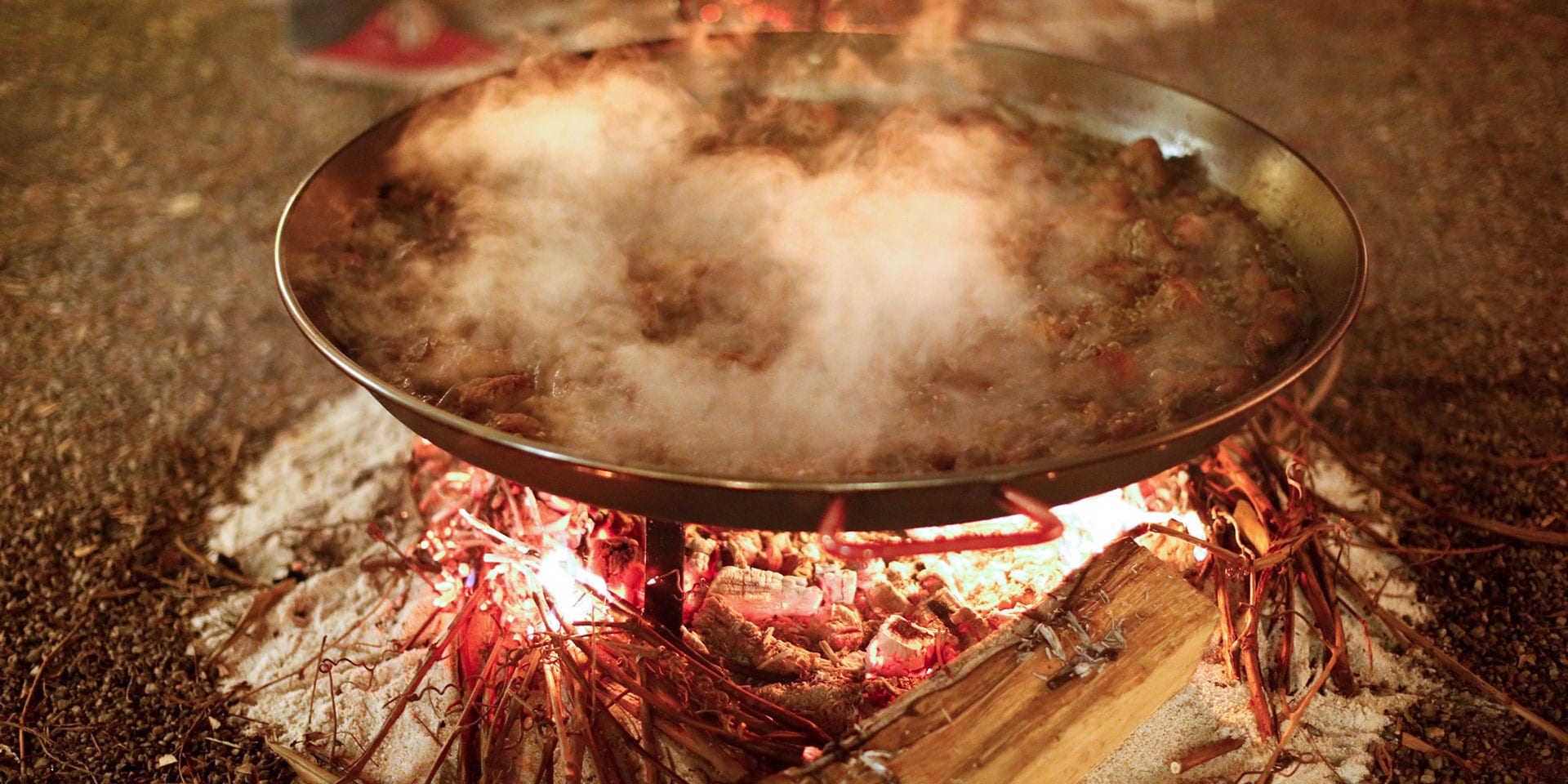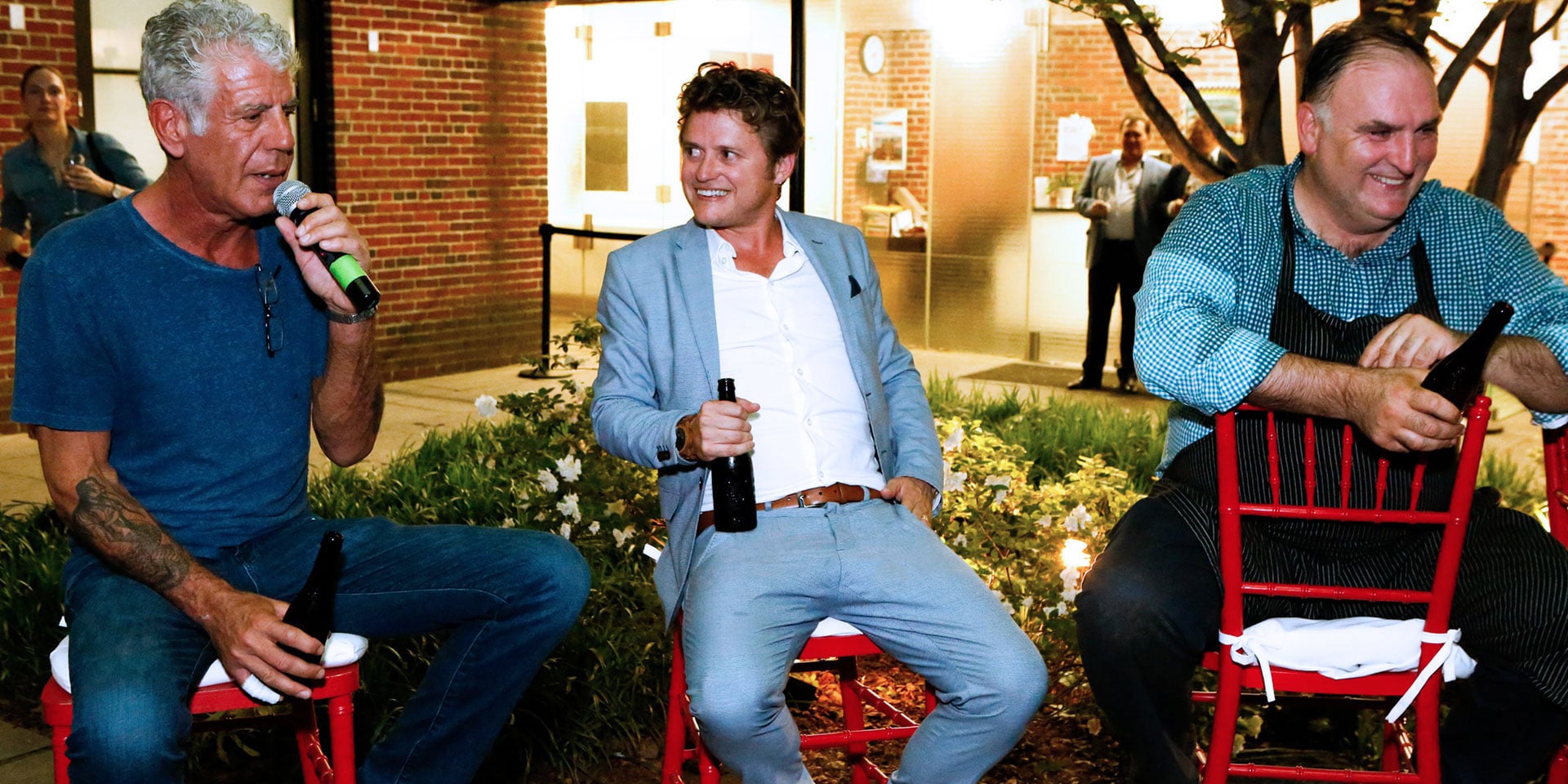What’s a traveler to do when he’s in Spain and can’t scrounge up a decent paella? If you’re Roads and Kingdoms publisher Matt Goulding, you have the good fortune of ringing up your friend, the iconic chef and Spanish native José Andrés.
The chef didn’t miss a beat.
“He says, ‘Are you near Benisanó?’” Goulding recalls of his 2010 trip. “‘If you’re near Benisanó, pull over, go to a restaurant named Restaurante Levante, and tell [Chef] Rafa that José sent you, and you’ll see what happens.’”
What happened was that Rafael Vidal, one of the world’s top paella masters, ushered Goulding into his restaurant in Spain’s Valencia region and introduced him to the magic of what a true Spanish paella should be.
“Paella is not just a dish, it’s a way of life in Valencia; everything revolves around the paella pan … around rice culture,” says Goulding, who recently published “Grape, Olive, Pig,” a deep-dive into Spanish food culture. “It’s 10 or 12 ingredients transformed through fire into a really beautiful and cohesive dish.”
Fast forward seven years and Goulding — alongside José Andrés and TV personality, chef and self-proclaimed lover of all things Spain, Anthony Bourdain — are at New York City’s Instituto Cervantes, extolling the virtues of Spanish food and culture in a garden courtyard dotted by seven crackling fires topped with bubbling pans of paella.
The occasion? A competition — Andrés’s brainchild — where amateur chefs vie with each other to create Valencian paella under the guidance of the world’s top masters of the dish, including Vidal and Rafa Margós, flown in from Valencia for the occasion.

“The province of Valencia is super particular about [paella]; they believe it’s been the most mistreated dish in the history of mankind,” says Andrés.
The ideal paella is simple, according to the chef. The trick to its alchemy is controlling the fire and turning a handful of ingredients — including chicken, tomatoes, green beans, bomba rice and olive oil — into something greater than the sum of its parts.
“Once you start you have to listen to the rice, to the chicken, to the fire; if you’re not listening, you’ll get lost — you have to be fully dedicated,” says Andrés. “You have to listen to the ingredients because they have a story to tell you.”
Andrés’ passion for and commitment to Spanish food and culture is what prompts Anthony Bourdain to describe him as “the one true ambassador” of all things Spanish, even in the United States.
“Whatever his motivation, [José] takes many chefs, and he’ll drag them off to Spain, stuff wonderful food in their faces, make them gain many pounds, but they always return absolutely enchanted by this incredible country,” says Bourdain. “There’s a lot to love and a lot to learn.”
It’s no surprise Bourdain is drawn to Spain’s focus on quality food and ingredients.
“There’s this almost fetishistic love of the good stuff and so I think for the same reasons that I respond to Japan, I respond to Spain,” explains Bourdain.
Bourdain first ventured to Spain 15 years ago, where he first encountered Ferran Adrià — often lauded as the world’s greatest living chef. That meeting that led to Bourdain’s first independent film, about Adrià and his 3-MICHELIN-Star restaurant, El Bulli.
“Even if [the film] never made a dime, it ended up being the beginning of everything good that’s happened in my life professionally since then,” says Bourdain. “The beginning of a long and deep love affair with Spain and all things Spanish.”
And yes, that love extends to creating the perfect Spanish paella. According to José Andrés, there are five characteristics to look for when recognizing an Earth-shatteringly good paella.
First, the appearance: The paella should look even and spread out in the pan. Next, the color.
“We don’t like that yellow color that every magazine puts on its pages; that’s for tourists,” says Andrés. “We want a beautiful golden color but not so yellow that you need to put your sunglasses on.”
Then there’s the texture and consistency of the rice. It should be soft but with “integrity.”
The underside of the paella is also key. Andrés says to look for the “socarrat,” meaning a caramelized crust has formed around the rice at the bottom of the pan.
“It means that the rice loves the paella pan, and the paella pan doesn’t want the rice to leave, and they bond together into one perfectly nice brown color — crispy, beautiful love between the rice and the paella pan,” explains Andrés.
Finally, there’s the fire and its smoke. “The smoke is probably the most important ingredient in a paella,” says Andrés. “You want this amazing umami [flavor] that the smoke is giving to the rice.”
Ready to plunge into Spain’s food culture and recreate the ultimate Valencian paella? Follow Roads and Kingdom’s detailed recipe, courtesy of paella great, Rafael Vidal.




